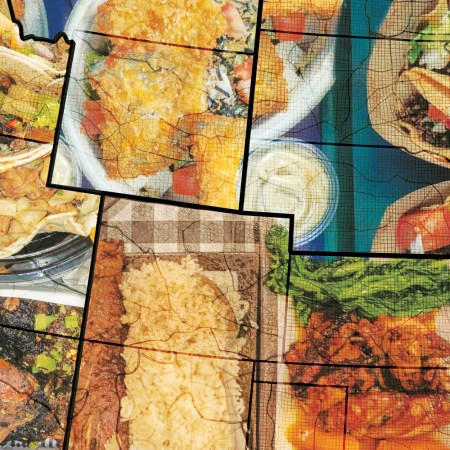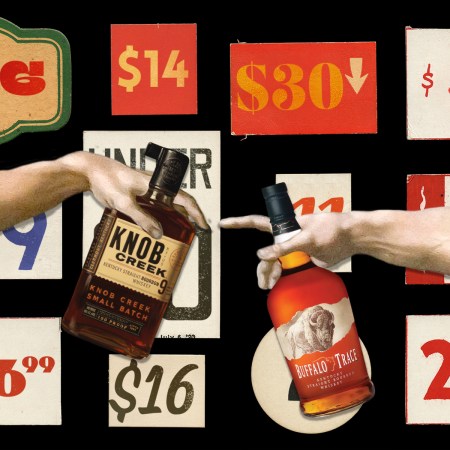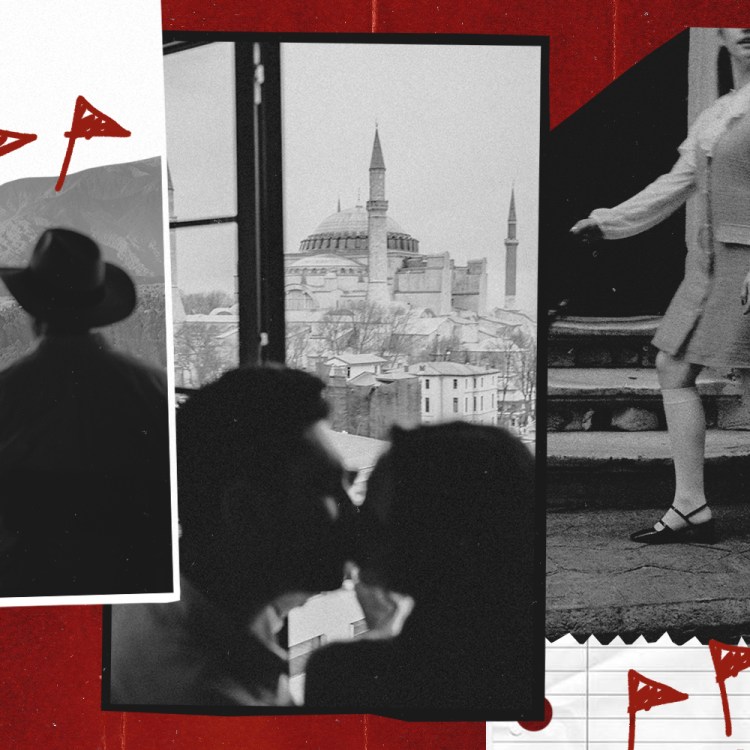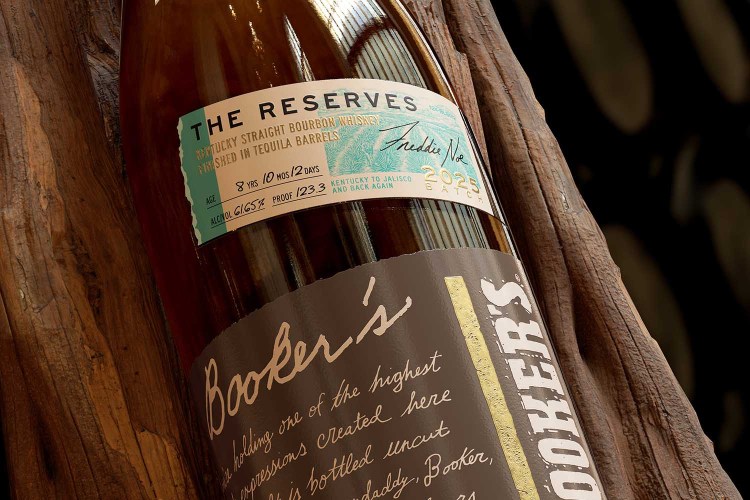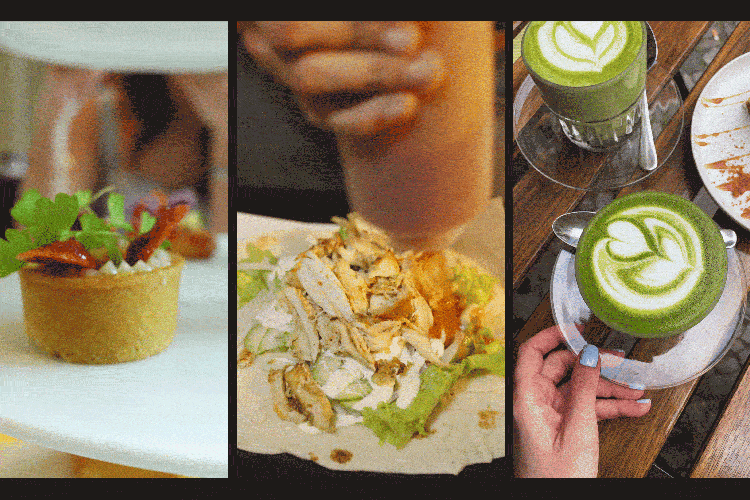If you visit one of the Little Italy neighborhoods scattered across North America, chances are you’ll be exploring an enclave that’s at least 100 years old. There, you’ll typically find a mix of Italian restaurants and bakeries, turn-of-the-20th-century Roman Catholic churches, and parks and streets named after notable Italian Americans. Most have at least one annual festival, and some even have museums dedicated to Italian-American culture. While the size and shape of these communities have changed over the years, at least 12 in the United States and Canada are still worth visiting.

Baltimore, Maryland
This is the southernmost Little Italy neighborhood along the East Coast. Shaped like a hexagon bordering the touristy Inner Harbor, Baltimore’s Little Italy features restaurants mixed in with two-to-three-story red brick row homes common in this part of town. Fire hydrants are painted the green, white and red of the Italian flag.
Albemarle and High Streets are where you’ll find the majority of multigenerational Italian restaurants and bakeries. Speaking of bakeries, Vaccaro’s feels more like a tourist attraction than any other spot in this Little Italy. You’ll find lines here, especially in the summer, but the desserts (from fill-to-order cannoli to 24 gelato and sorbetto flavors) are good enough that you may want to skip dessert wherever you’re having dinner.
Dating back to 1940 and currently in its third generation, Chiapparelli’s is the oldest restaurant still operating in this enclave. Their fried calamari is sprinkled with Old Bay, which is Maryland’s most iconic spice. Sabatino’s seems to have the celebrity-athlete market cornered, having served everyone from Andre the Giant to Ric Flair, who once left a Rolex in a bowl of spaghetti and meatballs.

Boston, Massachusetts
Boston’s North End has consistently been regarded as one of the best Little Italy neighborhoods in North America. The big rivalry here is between the cannoli from Mike’s and Modern. The lines are noticeable at both as are the pastry boxes you’ll see in the hands of pedestrians coming and going from the North End. Modern Pastry Shop has a handful of indoor tables, while Mike’s Pastry feels a bit like trying to see the Rolling Stones in a small indoor venue. While Mike’s wows first-time visitors with 18 different cannoli flavors, Modern has five different fillings, with each filled to order, so you won’t have to worry about a soggy shell.
With menu items like chicken parmesan egg rolls, Tresca is one of the North End’s standout Italian restaurants. It can also lay claim to the most sought-after table along Hanover Street, which serves as the neighborhood’s main drag. Table 77 seats two on the restaurant’s balcony, with the number being a nod to part-owner Ray Bourque who wore it during most of his 20-plus years in the NHL with the Boston Bruins. At cash or debit card-only Giacamo’s, every table is sought after as they do not take reservations.

The Bronx, New York
A slogan like “The Real Little Italy” sets the bar pretty high. Italian restaurants and bakeries in the Bronx can be divided into two categories: those on or near Arthur Avenue, and the rest.
In terms of bakeries, Egidio Pastry Shop claims the title of oldest, dating back to 1912. Artuso Pastry Shop has been around since 1946, but looks like it opened recently both on the inside and outside. While you can’t go wrong with the cannoli or cookies there, the red velvet cake is the best outside Manhattan. Actor and restaurateur Chazz Palminteri grew up catty-corner from Artuso but favors the no-frills Gino’s Pastry Shop, where cannoli and bomboloni can be filled to order.
A bad restaurant would be unlikely to survive long in this area. Antonio’s Trattoria has a large menu, where everything is worth coming back for. If you like the ravioli, be sure to make the short walk to Borgatti’s, the neighborhood pasta store, which dates back to 1935. If veal is your thing, you won’t find it much more tender than at Pasquale’s Rigoletto, which also has the best collection of Yankees memorabilia in the area.
If you’re unfamiliar with the Bronx and want a guide, Bronx Historical Tours offer three-hour walking tours of the neighborhood.
The Drinking Culture of Italy
From some of the world’s best wine to its most iconic cocktails
Cleveland, Ohio
You know you’re in Little Italy when there’s an Italian-American museum around the corner from an immigration lawyer who specializes in helping Italian Americans get dual citizenship and the main souvenir shop is called Crazy Cannoli. When it comes to cannoli and other desserts, Corbo’s versus Presti’s is Cleveland’s version of Mike’s versus Modern. In Cleveland, cassata has a different meaning than in other Italian enclaves. Instead of marzipan and cannoli cream, Cleveland-style cassata is more reminiscent of a strawberry shortcake. But when in Cleveland…
The neighborhood starts at the Little Italy-University Circle RTA station at 119th Street. It continues east for five blocks before giving way to Lake View Cemetery. Unlike most other Little Italy neighborhoods, this one is at least a 15-minute ride from downtown. But once you’re there, you have your choice of more than a dozen bakeries, restaurants and gelato shops.
Cleveland’s Little Italy can lay claim to having the oldest restaurant in the city that’s still just as impressive in the 21st century. Guarino’s Restaurant dates back to 1918 and is as good a white tablecloth red sauce joint as any along Mayfield Road, which divides the neighborhood into north and south. Mamma Santa’s is a casual pizza spot with checkered tablecloth-covered tables, also known for its red sauce. Try the cavatelli.

Manhattan, New York
If you’re aware of one Little Italy in North America, chances are it’s this one. Manhattan’s neighborhood runs along Mulberry Street between Canal and Broome. The fact that there are more than two dozen restaurants and bakeries densely packed within these three blocks makes it virtually impossible to not get a table somewhere.
Grotta Azzurra and Puglia are both more than 100 years old, while the neighborhood’s two most iconic spots opened around the same time in the early 1970s. Those are Caffe Palermo and Umberto’s Clam House. Yes, Ferrara is NYC’s oldest Italian bakery. However, it’s Caffe Palermo’s John “Baby John” DeLutro who is a gregarious neighborhood fixture and goes by (and has even trademarked) “Cannoli King.”
At Umberto’s, you can enjoy fried calamari with sauces from mild to hot that stick to the squid. In terms of their titular offerings, favorites include baked clams, linguine with white clam sauce, and the recent addition of thin-crust clam pizza, which is on par with what New Yorkers travel up to New Haven’s Little Italy for. If you’re looking for a place that’s popular with celebrities and where regulars don’t need to see a menu, try Il Cortile. Each room has a different vibe, and you can dine at the tables where former Sopranos cast members sat (and still do).

New Haven, Connecticut
Connecticut’s only Little Italy neighborhood is small compared to its cousins along the Acela Express line, but it’s a must-visit thanks to two iconic pizzerias along Wooster Street. Frank Pepe Pizzeria Napoletana and Sally’s Apizza (pronounced “ah-beets” and local slang for Connecticut’s version of Napoli’s most famous export) date back to 1925 and 1938, respectively. While both have since branched out to other cities, they started in the three-block stretch of Wooster Street between Olive and Franklin, selling thin-crust, coal-fired pies with crispy edges. Frank Pepe often gets credit for inventing the clam pizza, which you may have seen on an episode of Ugly Delicious. You also can’t go wrong with the tomato pie at either place.
Libby’s Italian Pastry Shop predates any restaurants or pizzerias on Wooster Street. It stays open until 10 p.m. on Fridays and Saturdays, making it an ideal after-dinner spot to get a spumoni brick or one of their many different flavored cannoli, some of which change with the seasons.

Philadelphia, Pennsylvania
Known as the Italian Market, Philly’s go-to spot for traditional Italian-America culture is small but unique. Most of what you’ll want to try is along South 9th Street between Fitzwater and Washington. There are enough butchers, cheesemongers, bakeries and produce stands that you can spend an entire day eating in the area.
Starting at Fitzwater, Angelo’s Pizzeria has a loyal local following and is the type of place where you’ll find a line around the corner before they open at 11 a.m. On the same block, you’ll find the fifth-generation Sarcone’s Bakery (try the tomato pie) and the oldest Italian restaurant in the United States, Ralph’s, which dates back to 1886 and is known for its red sauce dishes like Ralph’s Famous Parm. The veal version is crispy with the cutlet thinly pounded and the sauce an ideal balance of sweet and salty. Two blocks down and in the heart of the Italian Market is the cash-only Villa di Roma, which you may have seen exteriors of in The Irishman.

Providence, Rhode Island
The basil, mozzarella and tomato colors of the Italian flag are painted onto Atwells Avenue, which is where you’ll find the majority of restaurants, bakeries and specialty stores in what locals refer to as “The Hill.”
Fourth-generation Angelo’s Restaurant dates back to 1924, and claims the title of the oldest continuously operating restaurant in Federal Hill. Everything on the food menu here is under $25, with at least 10 items from the original 1924 menu. Everyone gets samples of two of those items: eggplant parmigiana, and veal and peppers.
For something more Rhode Island, try a scungilli salad, which you’ll find on many restaurant menus. The dish features large marine snails which are thinly chopped and served cold with lemon, olive oil and other chopped vegetables. You can also get it from the deli at Venda Ravioli, which is in the heart of Federal Hill and the largest Italian specialty store in the area.
During the summer, half of Atwells Avenue is closed to motor vehicles on Saturday evenings for Al Fresco on the Hill.

San Diego, California
San Diego is not the first city that comes to mind when most people think of Little Italy. However, in terms of size and variety, this one is the biggest and the best in North America. While you’re lucky to find one small or medium-sized piazza in other Little Italy neighborhoods, San Diego’s 48-square-block Italian-American enclave has six. That means you’re under no pressure to buy something if you want to sit down and people-watch.
India Street is the main drag, with India and Fir being the most important intersection. Bencotto, Civico 1845, Monello, and Roman Wolves are all near this intersection. While Manhattan’s Little Italy restaurants tend to favor Italian-American classics like veal parmesan, chicken alfredo and spaghetti with meatballs, those are not what you’ll find on the majority of tables here. Instead, cheese wheels are a big thing, with Monello being one of the first to introduce the idea to the neighborhood. And while there is pizza along India Street, the pasta dishes stand out in most of the restaurants from the Civico 1845’s pappardelle brasado to the tagliatelle al ragu di agnello at Bencotto.
The initial wave of Italian immigration into San Diego came from Sicilians who tended to work in the tuna industry. Nonna is a bakery with ample seating owned by a Sicilian family where you can get cassata cake both by the slice and in mini form. Their cannoli shells are darker as a result of cocoa powder.

San Francisco, California
While San Francisco’s North Beach neighborhood doesn’t have a classic Little Italy feel, it’s still a must-visit thanks to iconic locations like Fior d’Italia and Caffe Trieste. The neighborhood’s main playground is named after baseball legend and California native Joe DiMaggio, who grew up in the area. The annual Italian Heritage Parade ends a couple blocks south in Washington Square.
Tony’s Pizza Napoletana is the city by the bay’s most decorated pizza spot. Caffe Trieste is a no-frills cafe where Francis Ford Coppola wrote the screenplay for The Godfather more than a quarter-century before opening Cafe Zoetrope at the Flatiron-style Columbus Tower.
Victoria Pastry Co. dates back to 1914 and has all the classics plus princess cake, which has an outer layer of marzipan with vanilla cream and raspberry jam inside, resulting in a cake that’s as sweet as cassata but lighter. A few decades younger, Stella Pastry also has the classics but is equally known for its rum-soaked sacripantina sponge.

Toronto, Ontario
Toronto’s Little Italy is square-shaped, with the 306/506 streetcar rolling along College Street, which runs through the middle of the neighborhood. Sicilian Sidewalk Café, which dates back to 1959, has an old-world feel and is an ideal place to begin and end a day exploring the neighborhood. Start with one of their espresso drinks, and peruse their Italian-centric crepes and more than a dozen ice cream flavors, including bacio and zabajone.
Another spot that’s open for breakfast, lunch and dinner is Cafe Diplomatico, which is known for its thin-crust pizza and being the spot where the Italian community goes to watch soccer matches (it’s also great for people-watching). Standout pasta dishes in the neighborhood include Bella Vista‘s namesake gnocchi dish, which is rich and creamy, with the gnocchi soft enough to crush with your tongue.
If you really want to see the neighborhood come to life, plan your visit to coincide with Taste of Little Italy street festival, which takes place in mid-June.

Wilmington, Delaware
Because Wilmington is a smaller city overshadowed by Baltimore to the south and Philly to the north, you might be tempted to think its Little Italy isn’t worth visiting. But you’d be wrong. The stretch of West 5th to 11th Streets west of downtown gets little tourism, which results in more of a local experience.
Along Union Street you’ll find well-established eateries like the fourth-generation casual red sauce joint Mrs. Robino’s and Walter’s Steakhouse, the latter of which is known for its thick cuts of prime rib. And Italian water ice isn’t just a Philly and Jersey Shore thing. During the warmer months, you can’t leave Wilmington without getting one from Fusco’s or Bernie’s.
Every Thursday, our resident experts see to it that you’re up to date on the latest from the world of drinks. Trend reports, bottle reviews, cocktail recipes and more. Sign up for THE SPILL now.




